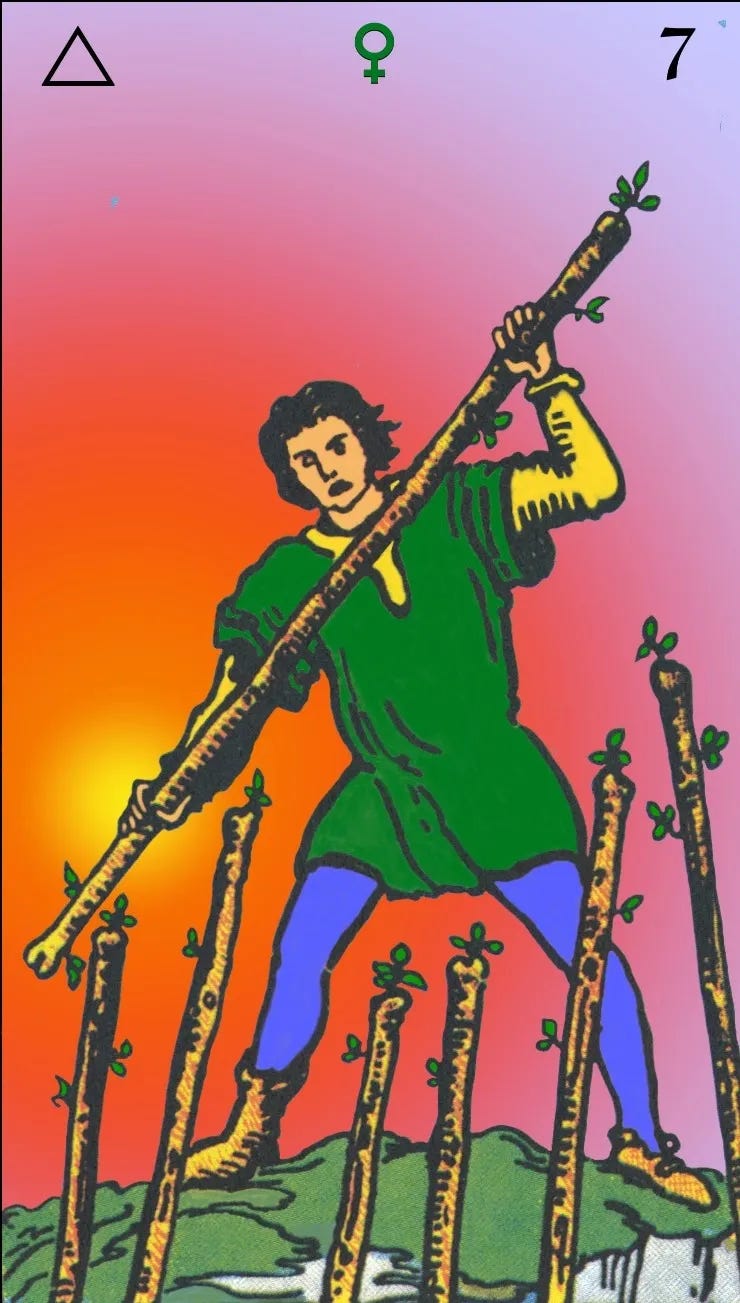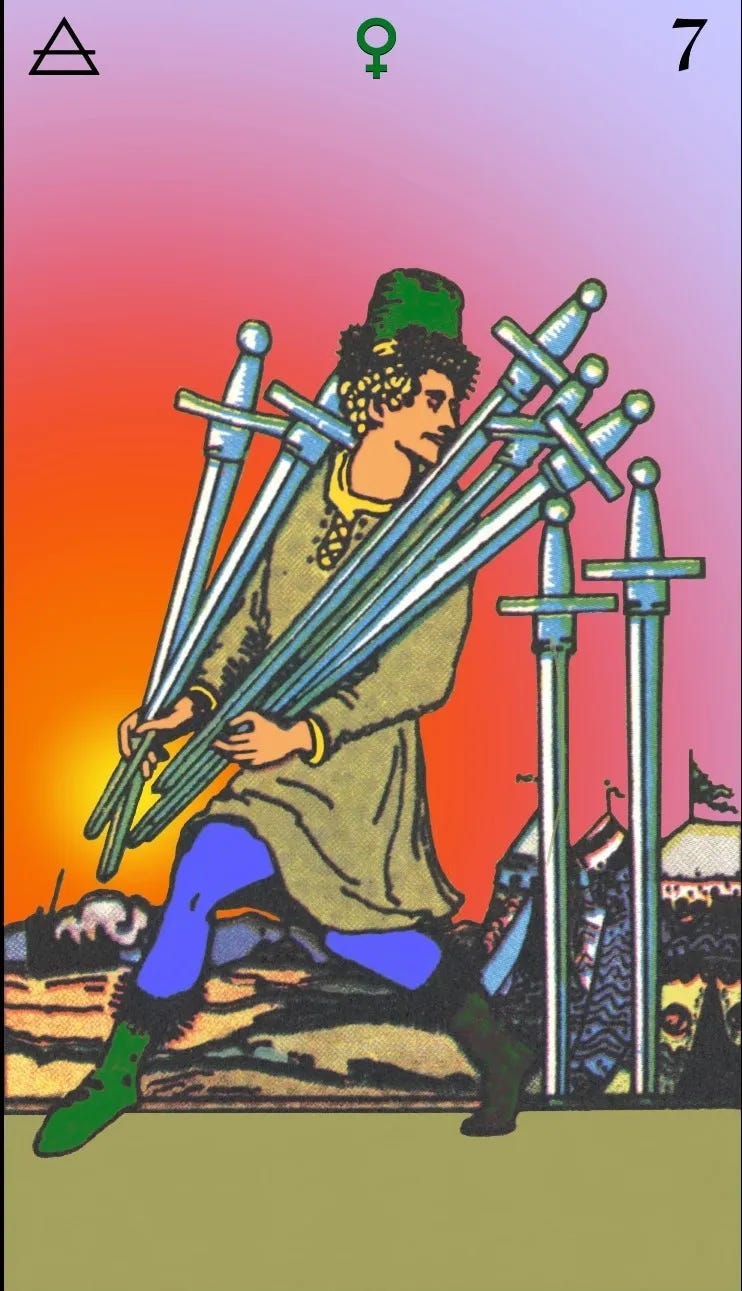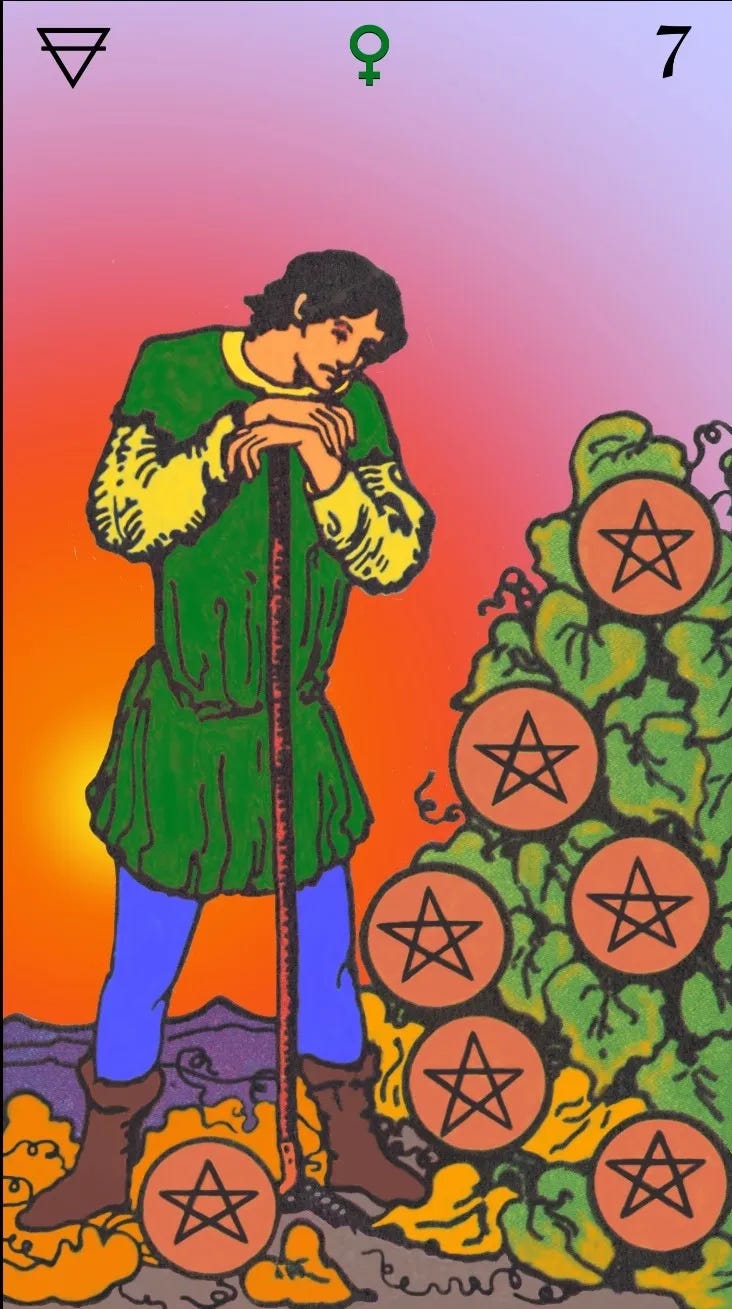A Rainbow of Energies
“What is a god? A god is a personification of a motivating power of a value system that functions in human life and in the universe.”
― Joseph Campbell
The gods have been personified in many ways by the various cultures of the world. Some know these same powers as “archangels” or “planetary spirits”. In Western astrology, we associate them with the planets and call them by the names of Roman gods. But what they are essentially is invisible energies — energies that do things, each with its own frequency and its own type of influence. The most universal and meaningful associations with these life powers that I know of is their correspondences with colors.
"Colors express the main psychic functions of man." ~ Carl Jung
Colors and Astrology
The above illustration shows how the colors fit into astrology. The model is the traditional RYB color wheel used for paint and design. This is the kind of diagram that can yield almost endless insight with continual contemplation over time.
The Circle around the perimeter represents Time. There we see the qualities of Time in colors associated with the 12 signs of the Zodiac.
The hexagon within the Circle represents the life energies from which half of the signs derive their qualities, in terms of color and planet.
The Center of the Circle represents the ultimate Source of All Things in absolute Timelessness. It belongs to no point in Time more or less than any other. The Center’s absoluteness makes White (all of the colors combined) and Black (no color at all) its equivalents in terms of color. They are extreme opposites, yet they are one, like the two sides of a single coin. As planets, these energies are Pluto and Neptune respectively.
The Primary Colors = Fire
The triangle around the Center represents the 3 Primary Colors: Red, Yellow, and Blue, which are fundamental and cannot be created by mixing other colors together. As the spectrum colors ‘closest’ to White, they correspond to the spontaneous motivational impulses of the Fire element, or intuition. If Fire were a section of an orchestra, it would be the brass.
As planets, the Primaries are Mars, the Sun, and Jupiter. The points of the triangle indicate each planet’s rulership (reflected qualities) of the 3 Fire signs in the Zodiac, which share their colors.
The Secondary Colors = Air
A hexagon is formed with the addition of the 3 Secondary Colors, which are blends (‘offspring’) of the Primaries: Orange, Green, and Purple. They correspond to the mental functions of the Air element, or thinking. If Air were a section of an orchestra, it would be the woodwinds.
As planets, the Secondaries are Mercury, Venus, and Uranus. Their points indicate their rulerships of the 3 Air signs in the Zodiac, which share their colors.
In the Zodiac, every other sign is either a Fire sign or an Air sign, sharing the Primary or Secondary Color of its ruling planet, and reflecting its qualities. These 6 signs are the “positive” or “masculine” signs.
The Tertiary Colors = Water & Earth
"Since psyche and matter are contained in one and the same world, and moreover are in continuous contact with one another and ultimately rest on irrepresentable, transcendental factors, it is not only possible but fairly probable, even, that psyche and matter are two different aspects of the same thing." — Carl Jung
The 6 signs in between the masculine ones are the Water (psyche; nonphysical form & feeling) and Earth (matter; physical object & sensation) signs. Theirs are the 6 Tertiary Colors, each a blend of its adjacent neighbors (as though joining with them to form a Circle). If Water were a section of an orchestra, it would be the strings. If Earth were a section of an orchestra, it would be the percussion.
These 6 in-between signs are “negative” or “feminine”, because in them the formless masculine planetary energies take form. Here the term “negative” doesn’t mean inherently “bad”, but refers simply to the impermanent nature of forms.
Forms serve purposes and are neither bad nor good in themselves. But as solid and permanent as many forms seem to be, ultimately none of them really is. Eventually we outgrow, consume, or abandon them, and they dissolve or morph into something else. We can have bad experiences with the feminine signs if we overvalue forms in the mistaken belief that they won’t ever change. Good comes from those bad experiences when we learn from them and get our perspectives better centered.
4 of the feminine signs are ruled by planets in the hexagon whose colors don’t match them, apparently connected with them through their orbit patterns (a different diagram) rather than through color. The other 2 feminine signs are ruled by planets not part of the inner hexagon at all: Saturn and the Moon.
Life ‘Breathes’ Out and In
Life ‘descends’ from the Source into physical manifestation from the Center out, like a blooming flower. Then, as it develops awareness, it ‘ascends’ back to the Central Source.
As human spirits traveling through Time in physical bodies, each of us is continuously developing awareness of all the life energies within. But how can our awareness take us back to the mysterious, ineffable Source?
The color model shows us that we are naturally aligned with the Source when we express all of the ‘colors’ within us clearly and in balance. In the orchestra model, the ‘conductor’ is the Source, and we’re aligned with the ‘Conductor’ when we’re ‘playing all of our instruments’ well and in harmony.
In this series, we’ll take a close look at the planet that rules the sign of the month. We’ll observe its associated color, its legitimate influence in life, and symptoms typically experienced when it’s somehow out of balance. We’ll also see an expression of its basic influence in music and in tarot, as cards of the minor arcana.
Green
Green is one of the 3 Secondary Colors, a blend of Yellow and Blue, and the complementary opposite of Red.
Green is a soothing, refreshing color that promotes balance, harmony, stability, and peace.
The harmony associated with green applies especially to nature and the unseen world, and the immanence of the divine spirit in the life of all things.
We often associate green with nature and its fertility: renewal, youthfulness, good health, and growth. The idea of growth extends to all forms of material gain and prosperity.
On the negative side, dark, unhealthy shades of green are associated with envy, greed, and sickness.
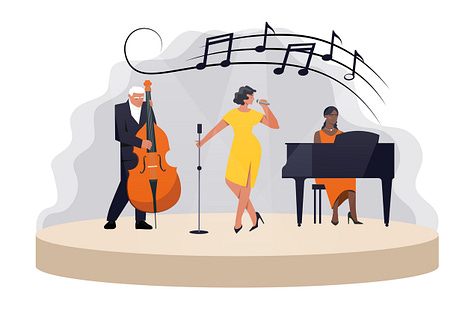
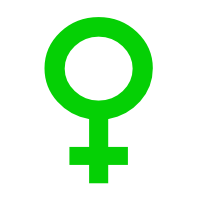
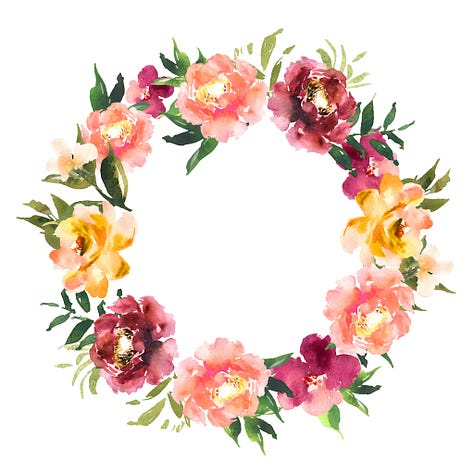
Venus
The influence of Venus is pretty much an extension of greenness. It’s a sweet influence that beautifies and harmonizes, especially in the material and social worlds.
Venus energy is Airy energy, one of the 3 types of thinking. This one is the “right-brained” type of thinking similar to that described in triarchic theory as contextual intelligence. This form of thinking aims to establish harmony with one’s environment by either adapting to the environment as it is, making changes in the environment, or switching to a different environment. Rather than measuring quantities, as in the objective “left-brained” analytical thinking of Mercury, the thinking of Venus is subjective and all about qualities. Like Mercury, Venus is a mental faculty that we can cultivate and develop. Venus signifies awareness of values, and the conscious effort to make choices that are positive and conducive to pleasure. It’s a graceful way of interaction with life that makes for smooth cooperation and lends itself well to both social situations and the arts.
In the material world, Venus is tasteful. She cares about both the solid value of good quality and the beauty of design that pleases any or all of the senses. Her appreciation includes the wondrous treasures of pristine nature as well as those lovingly wrought by human minds and hands, such as beautiful art, harmonious music, luxurious fabrics, intoxicating fragrances, costly jewelry, and rich foods — especially sweet desserts. As a token of value for effort expended, money, too, belongs to Venus’s domain.
The social expression of Venus is gentle, loving, cooperative behavior that shows appreciation of other people, especially in personal relationships. Venus takes pleasure in the company of others and harmonious interaction in shared activities, and promotes equal enjoyment for everyone. Smiles, warm affection, invitations, and thoughtful gestures such as greeting cards, gifts, and beautification of a shared environment, are the kinds of things Venus likes to do with the intention of enriching relationships.
Venus always tries to be nice, but she does have a negative side. It can manifest as greed, jealousy, or insincere friendliness with mercenary motives. Where sensitivity and refinement are lacking, Venus’s attempts at enhancement can be exaggerated, garish, and tasteless.
The composer of the piece below, Gustav Holst, was also a brilliantly insightful astrologer. He composed The Planets, a suite of pieces for each of 7 planets. All of them sound exactly like the planetary influences they express feel. This one, expressing the gentle peace and sweetness of Venus, is no exception. There’s informative text, but the sound is more important.
Venus, the Bringer of Peace - Gustav Holst
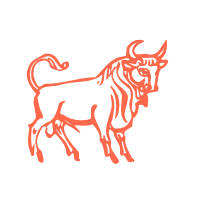
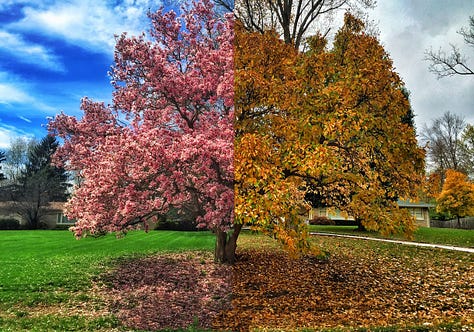

Venus Rules Taurus and Libra
Taurus and Libra have Venus’s beauty in common.
In Taurus, it’s the beauty of the spring blossoms; the emphasis is on renewal and growth in the material world.
In Libra it’s the beauty of the autumn leaves; the emphasis is on sharing the fruits of the earth and harmonious social activities with one another.
Read about Taurus (Vermilion) here:
Read about Libra (Green) here:
Tarot and the Planets
In tarot, the planets have their correspondences in the cards of the Minor Arcana. Each of the 10 numbers corresponds to a planet. There are 4 cards to a number, one for each of the 4 elements:
Wands = Fire
Swords = Air
Cups = Water
Pentacles = Earth
I’ll give you descriptions of the cards in my deck, along with the interpretations I generally use for them in divination (adapted to context as needed). If you read tarot, the meanings you use may be different from mine, which is fine.
The Sevens of the Minor Arcana
The tarot Sevens are the Venus cards, and they all represent advantages and opportunities. Attitudes and behavior are always nice in the Sevens, even if a situation is unwanted.
Reversed, a Seven indicates loss, rejection, or unavailability of an opportunity at the present time, for whatever reason.
Seven of Wands
A man stands on high ground at the edge of a cliff, holding a wand defensively, with both hands. Six other upright wands reach up from below, as if intending to compete for what the man has gained.
Upright - A situation in which one has an advantage over others.
Reversed - A situation in which one is at a disadvantage.
Seven of Swords
A man carrying five swords is sneaking away from an encampment. Two other swords remain stuck in the ground behind him as he retreats. The implication is that he would fight (5) something going on in that place, but is choosing instead to forego conflict and let his views stand there as a harmless unanswered question (2).
Upright - One can avoid trouble through tact or diplomacy, refraining from revealing one’s real thoughts.
Reversed - The truth comes out, and “honesty is the best policy.”
Seven of Cups
A man faces a cloud in which are seven cups, each containing a different potential ‘prize’. He can choose whichever option he feels would be most pleasing.
Upright - Options. One has a choice; what will it be?
Reversed - There are no options; a choice has already been made.
Seven of Pentacles
A man stands in a field, leaning on his hoe. He contemplates a bush full of ripe fruit, one of which lies at his feet near an autumn leaf. Here is his reward for the work he has been putting in.
Upright - Readiness. Something one has cultivated is ‘ripe for harvest’.
Reversed - Unreadiness. Something being cultivated is not yet ‘ripe’.
The Taurus Files
More to enjoy whenever the Sun is in Taurus










